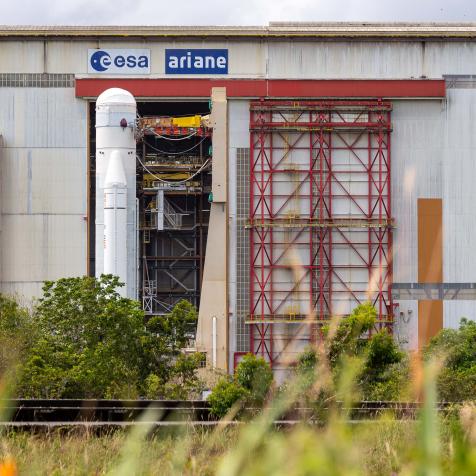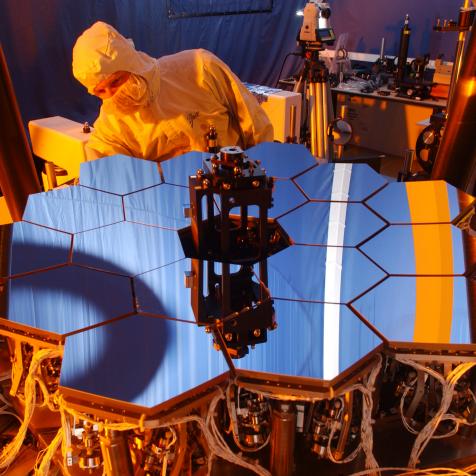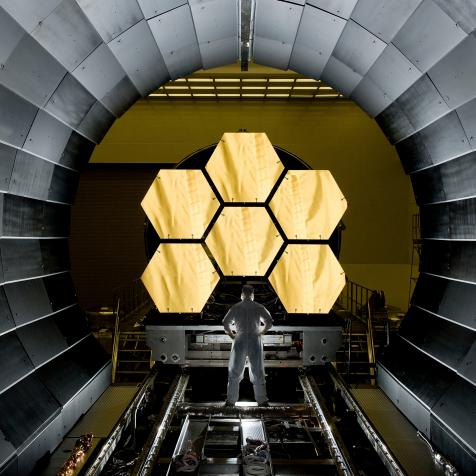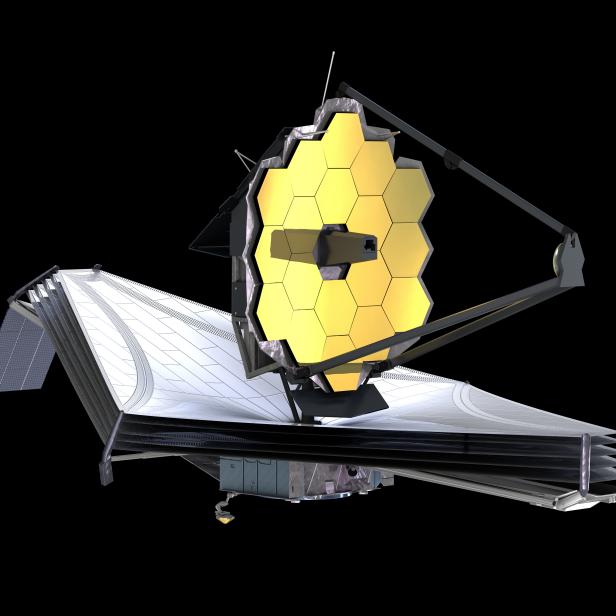
alex-mit
All Aboard the James Webb Space Telescope!

All hail the James Webb, the ultra-powerful super-telescope for the next generation. Or for about 5-10 years when its fuel runs out.
Getting anything into space is a pretty tricky proposition, and that goes double for telescopes. They have lots of fragile parts, especially their mirrors, which have to be ultra-precise to capture the best images possible. The Hubble Space Telescope has a mirror just over 7 feet across, which is just about the largest mirror you can get into space, given the diameter of the rocket itself.
And the James Webb Space Telescope is even bigger.
To make it work, the James Webb is the most complicated, intricate observatory ever put into space. The primary mirror of the telescopes is about 21 feet in diameter but is made of 18 separate hexagonal segments. They are currently all folded neatly together in a precise origami-like design, snugly inside the rocket that will soon send the telescope up. When the telescope reaches it's designated observing spot, a point in space almost a million miles away from the Earth, it will unfold to begin its work.
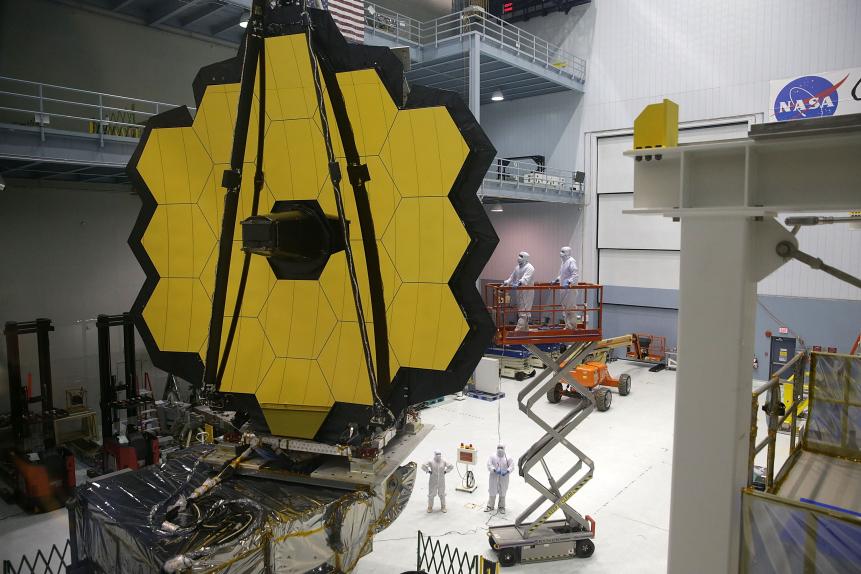
Alex Wong
Engineers and technicians assemble the James Webb Space Telescope on November 2, 2016, at NASA's Goddard Space Flight Center in Greenbelt, Maryland.
And that’s not the only unfolding the James Webb will have to do. The telescope is an infrared instrument, meaning it detects the same kind of radiation that the human body gives off as heat. But in space, there’s a gigantic source of infrared radiation: the sun. To protect its instruments and enable high-powered observations, the James Webb will also deploy a massive sunshield over 50 feet across.
The JWST is scheduled to launch on December 18th, making it about a decade late and over ten billion dollars over budget. Some of those delays are understandable, as it’s such a complex, never-before-flown kind of telescope. But some of those delays were easily avoidable, and NASA has repeatedly blamed its contractors for not keeping their end of the bargain.
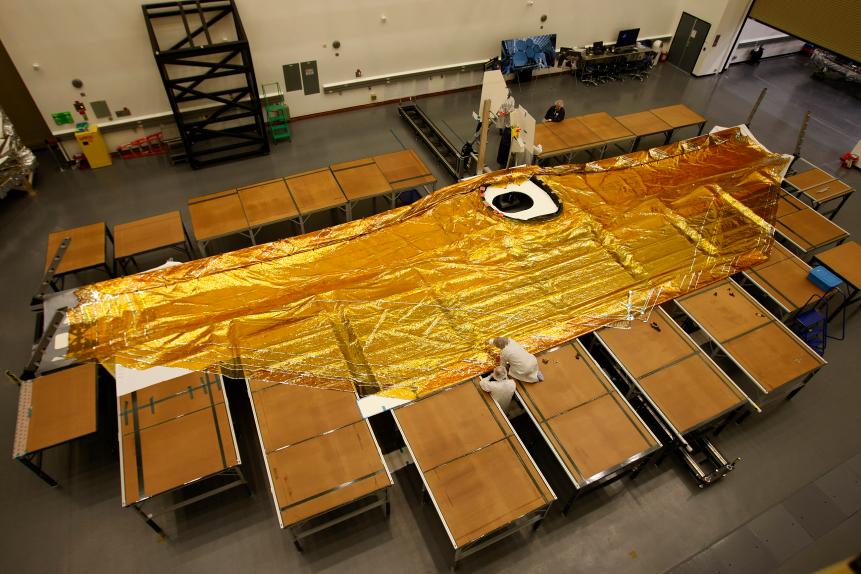
Allen J. Schaben
Bruce Blackman, the mechanical technician, left, and Kathryn Friend, sun shield integration and test manager, work on folding membranes of a full-scale test article five-layer sun shield, made of uncoated Kapton, that will shield the James Webb Space Telescope from the sun and heat.
Still, astronomers around the world hope that it will be worth it. With its gigantic mirror and sensitive infrared detectors, the JWST has a lot of science goals. For one, it will hunt for some of the first stars and galaxies to appear in our universe over 13 billion years ago, helping to piece together the story of our cosmic origins. It will also study the formation of newborn stars and young planetary systems – systems shrouded in thick layers of gas and dust that prevent us from seeing them with visible light. Lastly, the James Webb will study planets orbiting other stars, especially looking into their atmospheres for signs of life.
If all goes well, the James Webb will be able to maintain its position and keep itself cool enough for 5 to 10 years. That may not seem like a lot, especially compared to its predecessor the Hubble, which is still ticking nearly 30 years after its initial launch. But in that time I can guarantee you that the JWST will collect more than enough data to satisfy this generation of astronomers, and beyond.
Learn More about the Universe
Journey Through the Cosmos in an All-New Season of How the Universe Works
The new season premieres on Science Channel and streams on discovery+.



















